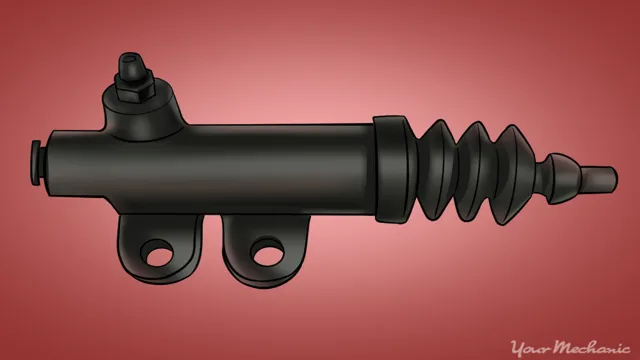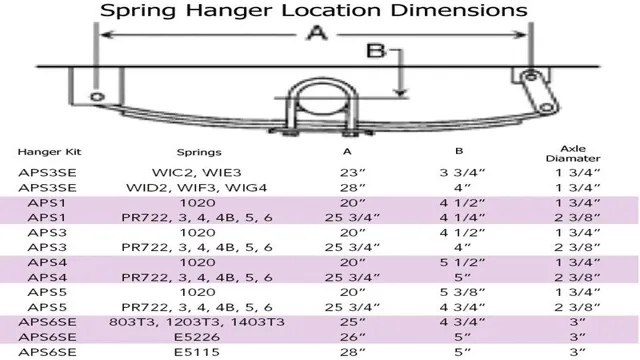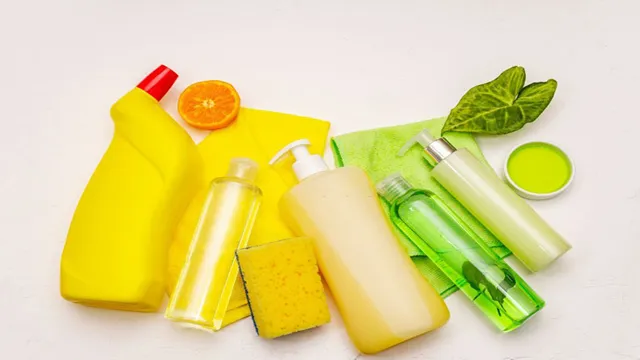Step-by-Step Guide: Installing a Clutch Slave Cylinder like a Pro
Are you experiencing difficulty shifting gears in your vehicle? One possible cause could be a faulty clutch slave cylinder. The clutch slave cylinder is an essential component of your car’s hydraulic clutch system that engages and disengages the clutch when shifting gears. If it fails, it can lead to a loss of clutch pressure, making it difficult to shift correctly.
Fortunately, replacing a clutch slave cylinder can be done at home with the right tools and some basic mechanical knowledge. In this blog, we will guide you through the steps required to install a clutch slave cylinder, ensuring a smooth shifting experience for your vehicle. Whether you’re a seasoned mechanic or a beginner, we’ve got you covered.
Let’s get started!
Gather Tools and Parts
If you’re wondering how to install a clutch slave cylinder on your vehicle, the first step is to gather all the necessary tools and parts. You’ll need a clutch slave cylinder kit, which typically includes the cylinder itself, a release bearing, and clutch alignment tool. You also need to make sure you have the right tools, such as a socket wrench, pliers, screwdrivers, and a torque wrench.
Additionally, you may need some lubricant, brake cleaner, and a rag to clean any debris or residue around the area. It’s important to have everything on hand before you start the installation process to avoid any unnecessary delays. By taking the time to gather all the necessary parts and tools, you’ll be better prepared and equipped to complete the installation process with ease.
Tools: socket and ratchet set, brake cleaner, jack, jack stands, clutch slave cylinder, brake fluid, tubing
When planning to change your clutch slave cylinder, it’s important to have all the necessary tools and parts on hand. For this job, you’ll need a socket and ratchet set, jack, jack stands, brake cleaner, tubing, clutch slave cylinder, and brake fluid. Make sure everything is easily accessible and ready to go before you start your project, so you can avoid running to the store halfway through.
It’s important to have the right tools and parts, as this can make the job much easier and prevent any unnecessary mishaps. Think of it like a chef preparing all the ingredients before starting to cook. By having everything ready to go, you won’t have to worry about any unexpected surprises.
So, gather all the tools and parts you need, and let’s get started on changing that clutch slave cylinder!

Prep Work
If you’re planning on replacing your clutch slave cylinder, there are a few things you should do to prepare for the job. Firstly, make sure you have all the necessary tools on hand, including a socket wrench, pliers, and a pry bar. You’ll also need to buy a replacement cylinder and have some brake fluid on hand to top off the system once the new cylinder is installed.
Before you start working on the vehicle, read the owner’s manual and make sure you understand the process fully. It’s also a good idea to watch some tutorial videos or read how-to guides online to get a better sense of what you’ll be doing. Once you feel confident in your ability to replace the clutch slave cylinder, you can move on to the actual installation process.
Remember to take your time, work carefully, and double-check your work at every step to ensure a successful repair.
Raise the car securely on jack stands, remove wheel, remove clutch line from slave cylinder
If you’re planning to replace your car’s clutch, there are a few crucial steps you’ll need to take first. The first step is to raise the car securely on jack stands. This means finding a flat and level surface to work on, then placing the stands under your car’s frame rails or lift points.
Next, you’ll need to remove the wheel on the side of the car where the clutch is located. This will give you better access to the clutch and make it easier to remove and replace. Finally, you’ll need to remove the clutch line from the slave cylinder.
This is a small, metal tube that connects the clutch master cylinder to the slave cylinder. You’ll need to use a flare nut wrench or line wrench to carefully loosen the fitting without damaging the line or cylinder. With these prep steps complete, you’ll be ready to move onto more detailed work on your car’s clutch system.
Just be sure to follow all safety precautions and wear appropriate personal protective equipment to ensure your own safety while working on your vehicle.
Replace the Old Cylinder
If you are experiencing issues with your clutch system, it may be time to replace the old cylinder. Here’s how to install a clutch slave cylinder: first, locate the old cylinder by consulting your vehicle’s manual. Then, remove the bolts and detach the old cylinder from the hose.
The new cylinder can be installed by attaching the hose to the new cylinder and securing it with bolts. It’s important to double-check that the new cylinder is properly aligned before tightening everything down. Once everything is secured, bleed the system to ensure that there are no air pockets.
If you’re unsure about any of these steps, it’s best to consult a mechanic to make sure the installation is done correctly. By replacing the old cylinder, you can get your car back on the road and avoid potential future problems.
Unbolt and remove old slave cylinder, clean area with brake cleaner, bolt in new cylinder
Replacing the old slave cylinder in your vehicle’s clutch system is not the most complex task, but it can be intimidating for those without much mechanical knowledge. Thankfully, with the right tools and a bit of patience, it’s something most people can do themselves. The first step is to unbolt and remove the old slave cylinder from your vehicle.
You’ll want to ensure the area is clean, so spray it down with some brake cleaner to get rid of any debris or grime that may have accumulated. Once you’ve done that, it’s time to bolt in the new cylinder. Make sure to tighten the bolts securely and double-check everything before starting up your vehicle again.
With a little practice, you’ll be changing out slave cylinders in no time and feeling more confident in your DIY mechanic skills. Just remember that using a high-quality replacement cylinder is key for long-lasting performance.
Bleed the System
Installing a clutch slave cylinder can be a daunting task, but it’s actually quite simple if you follow a few steps. Before you begin, make sure you have all the necessary tools and materials, including brake fluid, a wrench, and a new clutch slave cylinder. Start by locating the old clutch slave cylinder, which is typically located on the driver’s side of the transmission.
Next, remove the old cylinder by loosening the bolts and disconnecting any hoses or clips. Once removed, install the new cylinder and connect all hoses and clips. Before you tighten the bolts, it’s important to bleed the system to ensure there aren’t any air bubbles.
This is done by opening the bleeder valve and pumping the clutch pedal until all air bubbles are expelled and the brake fluid runs clear. Double-check for any leaks or loose connections, and you’re all set! With just a few simple steps, you can install a new clutch slave cylinder and get your vehicle back on the road in no time.
Attach tubing to bleeder valve, have someone pump clutch pedal while opening valve and allowing fluid to flow through tubing
When it comes to bleeding your clutch system, it may seem like a daunting task, but with a little bit of patience and the right tools, it can be done in no time. One of the first steps in the process is to attach tubing to the bleeder valve. This will allow you to catch the fluid that comes out of the valve and prevent it from getting all over your engine bay.
Once you’ve attached the tubing, it’s time to have someone pump the clutch pedal while you open the valve and allow the fluid to flow through the tubing. This is where a second person comes in handy, as it can be difficult to do this step on your own. As the fluid flows through the tubing, you may notice some air bubbles escaping.
This is perfectly normal and means that the air is being pushed out of the system. Continue to pump the pedal and open the valve until you no longer see any bubbles and the fluid coming out is clear. This means that the system has been fully bled and is now free of air pockets.
Remember to keep an eye on the fluid level in your clutch master cylinder as you do this, as you don’t want it to run dry and introduce more air into the system. With a little bit of elbow grease, bleeding your clutch system can be a quick and easy task that will have your car running smoothly in no time.
Test Drive
If you’re wondering how to install your clutch slave cylinder, don’t worry – it’s not as difficult as it may seem. First, locate the cylinder which is usually near the transmission, and remove any surrounding components if necessary. Once you have access to the cylinder, remove the bolts holding it in place and detach any hydraulic lines.
Next, install the new cylinder and reattach the bolts and hydraulic lines. Bleed the system to remove any air bubbles and test the clutch pedal for proper functionality. While the process may vary slightly based on your specific vehicle, these general steps should give you an idea of what to expect.
Don’t let the thought of installing a clutch slave cylinder intimidate you – with the right tools and some patience, you can easily do it yourself.
Check for proper clutch engagement, adjust if necessary before driving
When taking your car for a test drive, it’s important to check for proper clutch engagement before hitting the road. This means ensuring that the clutch properly disengages from the engine when you press the pedal and engages smoothly when you release it. If the clutch is not engaging properly, it could lead to a variety of issues such as jerky shifting, difficulty accelerating, and even damage to the transmission.
To check for proper clutch engagement, start by sitting in the driver’s seat and pressing the clutch pedal all the way down. Then, start the engine and shift into first gear. Slowly release the clutch and see if the car moves forward smoothly.
If there is any hesitation or jerking, the clutch may need to be adjusted. It’s important to have this done before you start driving, as continued use of a faulty clutch can lead to costly repairs down the line. Remember to always be attentive when driving and to keep up with routine maintenance to ensure your vehicle stays in top shape.
Conclusion
In conclusion, installing a clutch slave cylinder is a bit like performing a well-orchestrated dance. You must have the right tools, follow the right steps, and maintain a steady rhythm throughout the process. But fear not, with the proper guidance and a bit of patience, anyone can master the moves and get that clutch running smoothly again.
So, grab your toolbox and get ready to strut your stuff while installing that new clutch slave cylinder like a pro!”
FAQs
What is a clutch slave cylinder and what does it do?
A clutch slave cylinder is a component of a hydraulic clutch system that helps to engage and disengage the clutch. When you press the clutch pedal, it sends hydraulic fluid to the slave cylinder, which then pushes a rod that moves the clutch release bearing and disengages the clutch.
Why would I need to replace my clutch slave cylinder?
Clutch slave cylinders can fail over time due to wear and tear or leaks in the hydraulic system. Symptoms of a failing clutch slave cylinder include difficulty shifting gears or a soft or spongy clutch pedal. If you notice these symptoms, it may be time to replace your clutch slave cylinder.
Can I replace my clutch slave cylinder myself?
While it is possible to replace your clutch slave cylinder yourself, it can be a difficult and time-consuming process. You will need to drain the hydraulic system, remove the transmission, and install the new slave cylinder. If you are not confident in your mechanical abilities, it may be best to have a professional mechanic perform the replacement.
How long does a clutch slave cylinder last?
The lifespan of a clutch slave cylinder can vary depending on the make and model of your vehicle and your driving habits. Generally, a clutch slave cylinder can last anywhere from 50,000 to 100,000 miles. However, if you notice symptoms of a failing clutch slave cylinder, it is important to have it replaced as soon as possible to avoid further damage to your clutch system.





